Great Design Plant: Encelia Californica
http://decor-ideas.org 10/21/2014 00:13 Decor Ideas
California brittlebush (Encelia californica) is a must for low-water habitat gardens. This vigorous and dependable subshrub shows off its exuberant mass of large daisy-like flowers in spring and fall. Its long, bountiful bloom periods, combined with its food offerings of both pollen and nectar, make Encelia highly attractive to native bees and other pollinators. Pollinating insects are then food for birds and other critters.
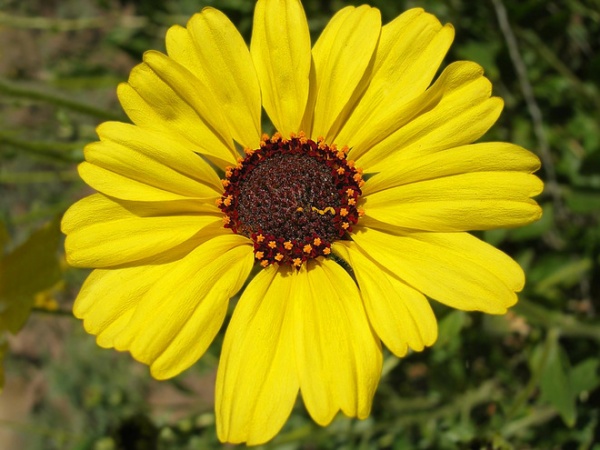
Botanical name: Encelia californica
Common names: California brittlebush, coast sunflower, California sunflower
Origin: From Santa Barbara County, California, south to northwestern Baja California
Natural habitat: Coastal scrub, below 1,600 feet
Where it will grow: Hardy to 35 degrees Fahrenheit (USDA zones 10b to 11; find your zone); will recover from 27 degrees Fahrenheit but will freeze to the ground and die at about 20 degrees
Photo by Joe Decruyenaere
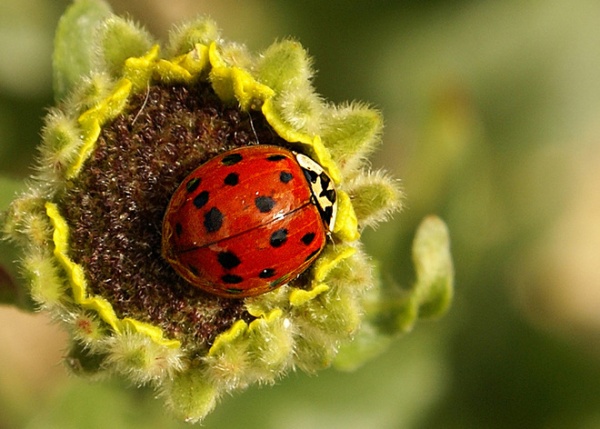
Water requirement: Drought-tolerant to moderate water
Light requirement: Full sun
Soil: Adaptable; prefers well-drained soil
Mature size: 3 to 4 feet tall and 4 to 6 feet wide
Benefits and tolerances: Tolerates seaside conditions, alkaline soil and clay; slope stabilizer
Seasonal interest: 4-inch cheerful daisy-like flowers in spring and fall
When to plant: Late fall is ideal, winter works well, spring is acceptable and summer planting can be challenging to all but the most experienced gardener.
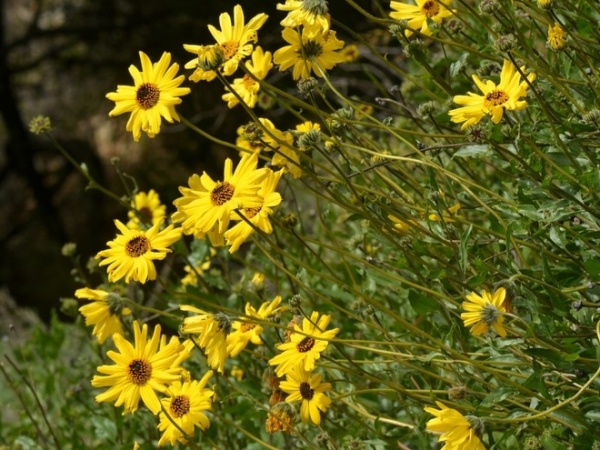
Distinguishing traits. This 3-foot-tall, 5-foot-wide subshrub is a profuse bloomer with large daisy-like flowers in spring and again in fall. An easy subshrub to grow, Encelia is a pollinator magnet — drawing in native bees, butterflies and other pollinators — making it an exceptional habitat plant. Cutting it back hard every year produces a better form and manages Encelia’s tendency to be leggy. Regular deadheading keeps the blooms coming.
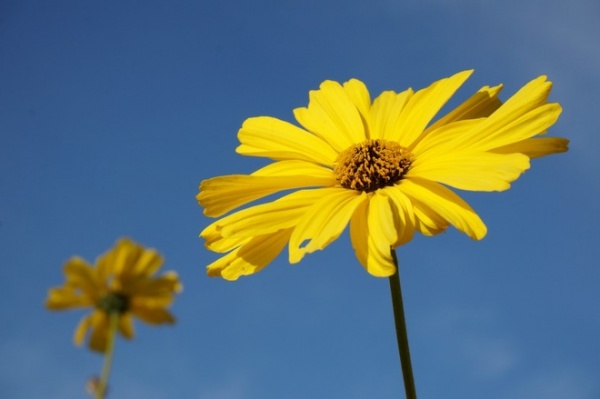
Wildlife value. According to the new book California Bees & Blooms, A Guide for Gardeners and Naturalists, Encelia deserves more attention for bee-habitat gardens. Its long, profuse blooming makes it a great native plant for native bees, butterflies, honeybees and other pollinators. Birds also find Encelia’s attributes appealing. Depending on the species of bird, they relish the seeds, the well-fed insects or both.
In my home garden, I call Encelia “the ladybug hotel” for its allure to lady beetles. There have been as many as five species of ladybugs on my one Encelia plant in the spring. I’ve never seen a serious outbreak of aphids, so the ladybugs must be handling the problem before I’m aware of it. I’m happy to provide these beneficial ladies with a comfy hotel in trade for their hard work.
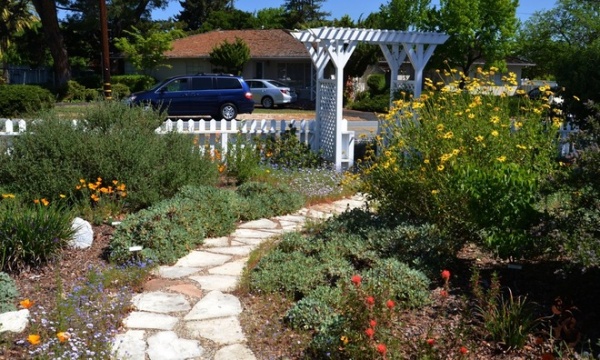
How to use it. Encelia is a great selection for a colorful mixed border or perennial bed. Plant it with other California natives, like salvia, ceanothus, mimulus and rhus. I particularly love contrasting yellows with blues or purples for an electric color combination. Encelia is also helpful for erosion control on steep banks. And its informal beauty makes it a great design plant for low-water gardens.
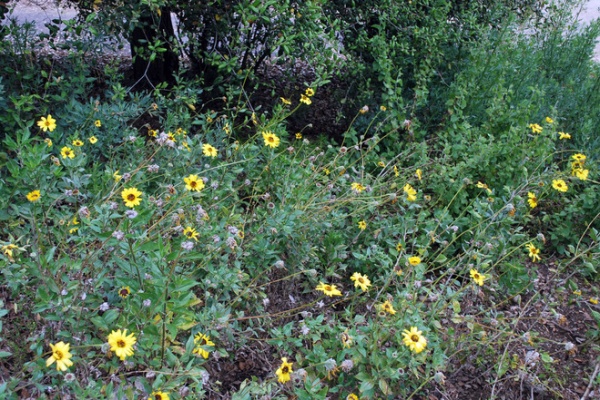
Planting notes. Encelia is easy to grow and adapts to many garden conditions. Simply give it well-drained soil, space for its 4- to 6-foot-wide exhibition of flowers, and — once it’s established — a drink of water at least once a month to keep it green or twice a month to increase flowering for yourself and the pollinators. Without supplemental water, Encelia will go dormant in summer and lose its leaves.
Deadheading Encelia as often as every two weeks will prolong the bloom and keep the plant looking its best. I rarely deadhead mine, preferring to give it a light haircut once during its summer downtime. It continues to flower, and the summer haircut improves its shape.
Hard pruning reduces Encelia’s tendency to become rangy and floppy. I prune Encelia back to 1 foot tall every year after the risk of frost has passed. By pruning later in the season, I’m protecting the lower branches and roots from cold damage. If there is little or no risk of temperatures below 35 degrees Fahrenheit, prune Encelia hard in the winter for an early rejuvenation in the spring.
Photo by Bri Weldon
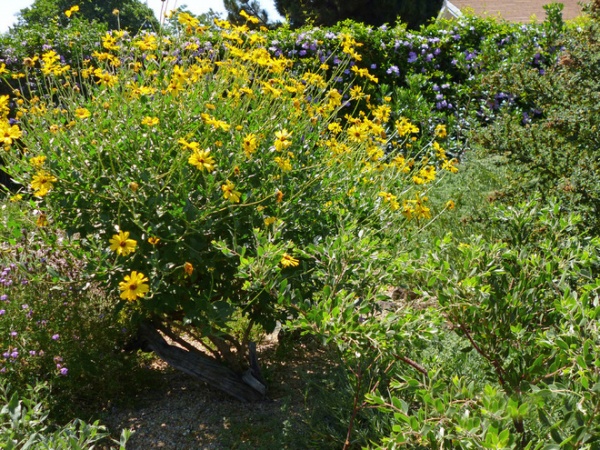
Other cultivars and species. The ‘El Dorado’ cultivar has larger flower heads with overlapping rays. Brittlebush (Encelia farinosa) is a similar species adapted to desert habitats in California, Utah, Arizona and northwestern Mexico.
More:
Gardening for the Bees, and Why It’s a Good Thing
Browse plants native to more regions of the U.S.
Related Articles Recommended












